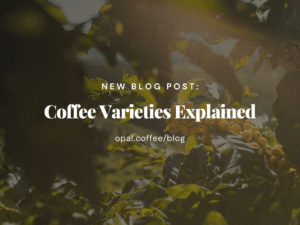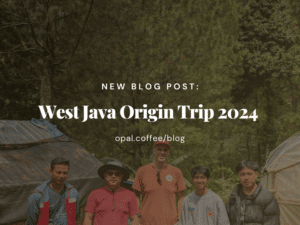
Coffee Varieties Explained
The first blog of the year is going to be about understanding coffee varieties.
With more than 125 coffee species, only two are commercially viable: Coffea arabica and Coffea canephora (robusta).

Is it their size, color, or flavor?
If they are all different, does that mean that one lot is better than the other?
These are the questions that coffee professionals keep on asking. Even though there are globally used tools and protocols commonly applied to classify green beans like the SCA Green Arabica Coffee Classification, which you have most likely heard of, quite often coffee producers or importers create their own scale to ensure that the descriptors represent their product the best.
Ethiopia, commonly known as the origin of coffee, is a great example of this practia fairer price for their product, and to run the agriculture system more efficiently. For those reasons, in 2008, coffee was added to the list of crops traded through ECX – Ethiopian Commodities Exchange – which is when the quality of Ethiopian beans became categorized.
Every coffee that goes through ECX evaluation is given a geographical destination, together with a specific grade, based on number of defects and flavors quality. And the matter of grades is the topic we would like you to dive a little deeper with us.
The highest grade on a scale. Both washed and natural coffees can fit this category; it is most definitely a “basket” for coffees considered “specialty”. The beans undergo a strict selection, leaving only the most clean and unique lots in it. They are well known for their intense aroma, fruit-like acidity, well-structured and most complex flavors of berries, florals and tea-like notes. Thanks to slow cherries maturation and vigorous green bean preparation, very little to no defects are being found within this grade.
Also considered “specialty”, this grade represents coffees of very similar qualities to grade 1 although the beans may slightly be smaller and few secondary defects may occur like slight insect damage or a shell. Due to being picked earlier in the harvest season, they usually sit at a slightly lower price compared to grade 1 coffees. However, they still present a very high quality in a cup, and are strongly appreciated by coffee connoisseurs.
Officially anything below grade 2 is no longer considered a “specialty” grade. But interestingly, based on our experience, some amazing coffees can be found within this category especially when it comes to naturals. A higher number of defects may occur in this grade, coming from less precise green bean selection, but the flavor in the cup makes up for it. It may be less intense or complex, compared to grade 1 or 2, but overall, some beans still hold very good cup quality and sometimes sitting within a range of 83-85 SCA points.
For Opal Coffee, to purchase beans of this grade, they still have to meet a criterion of reaching at least 80 SCA points, with no primary defects in a green, such as fungus damage or full black. And while the quality of those coffees is noticeably lower (less clean, less structured), the flavor in the cup still represents good qualities of berries, spices and tones, which are likely characteristics for different growing regions in Ethiopia. Because of the quality of grade 4 coffees, they understandably sit at a lower price point which makes them a great option for blend component.
Any coffee within that range is considered a commercial quality, with numerous defects, easily detected in both physical and sensory evaluation.
Ungraded coffees that didn’t go through the formal evaluation, or didn’t meet the criteria to be categorized as a high grade.
It is worth mentioning that as much as the ECX grading system brought some clarification to the coffee grading itself – its limited traceability to the microregions and washing stations, exporters and importers were not allowed to cup coffees before they would participate in the auctions.
Listening to the concerns raised by specialty coffee representatives after several years of operating more through ECX and Ministry of Agriculture, most of the coffee’s evaluation was shifted in 2017 onto the ECTA “Ethiopian Coffee and Tea Authority” and CLU “Coffee Liquring Unit” both run under Ministry of Trade. It had brought back the transparency and legalized direct trade in a country.

The first blog of the year is going to be about understanding coffee varieties.
With more than 125 coffee species, only two are commercially viable: Coffea arabica and Coffea canephora (robusta).

In late October and early November, Jason (Opal BNE) and Hengky (Opal SYD) traveled to West Java to visit several coffee farms, with the goal of developing a sustainable and long-term buying plan.
© Copyright Opal Coffee 2025. All Rights Reserved | Privacy Policy — Designed by Hoot Media
